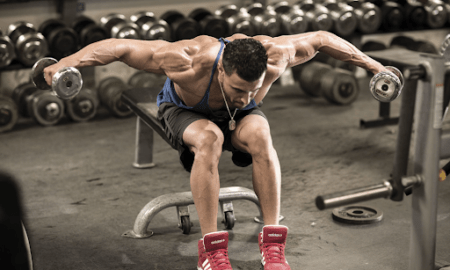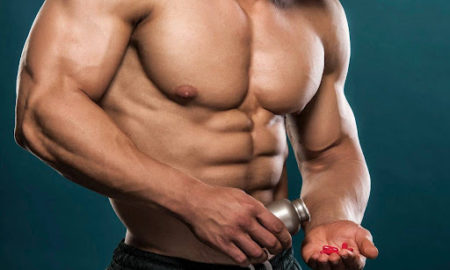Q: I’m in a rut in my strength development. I need to get my power clean scores up. I will be tested by my college, and I need to up my numbers. Any new tricks?
A: One of my strength-coaching colleagues told me that in the early ’70s, during a press conference prior to a Russia-vs.-U.S. wrestling competition, someone mentioned that the American wrestler in the 165-pound-bodyweight class could bench-press 365 pounds—quite a remarkable accomplishment at the time, especially for a nonpowerlifter. Athletes weren’t using the elaborate equipment they have today, which can add hundreds of pounds to a raw performance. The Russian counterpart responded by producing two pairs of pliers and proceeded to squeeze them so hard that they snapped. After the match the defeated U.S. wrestler commented that when the Russian grabbed his arms, he felt as if they were locked in a vise and that he immediately began to lose sensation in his arms and hands. Again, the U.S. wrestler was certainly much stronger than the Russian from a weightlifting standpoint, but the Russian had achieved a remarkable degree of functional strength for his sport.
In every facility that I’m asked to help design, I insist that the owners purchase calibrated, thick-handled barbells and dumbbells. It’s important not to sacrifice quality for price. I say that because I know that several companies now offer thick barbells, but to keep the price down, those bars usually don’t rotate. Essentially, all you’re getting is a large metal pipe. Without the rotation, you can put considerable stress on your elbows and wrists. That discourages many athletes from using the bars. For the best thick bars that rotate and even hold Olympic plates, I recommend checking out Grace Fitness (www.GraceFitness.com).
One problem many strength coaches have is with inferring practical information from sciences such as motor learning. Not surprisingly, the themes of many seminars in strength training deal with “bridging the gap” between science and biophysical application.
Post-tetanic potentiation, or PTP, is a motor-learning concept that Roger M. Enoka defines in his remarkable textbook Neuromechanical Basis of Kinesiology. He writes: “The magnitude of the twitch force is extremely variable and depends on the activation history of the muscle. A twitch elicited in a resting muscle does not represent the maximal twitch. Rather, twitch force is maximal following a brief tetanus [a condition of prolonged or repeatedly induced muscle contraction]; this effect is known as post-tetanic potentiation of twitch force.” What that means is that a more powerful muscular contraction can be achieved if the contraction is preceded by a strong muscular contraction.
Now let me show you how to apply PTP to Olympic lifting. For a female lifter it’s not necessary to use the thick-handled barbells to get the effect. Two types of barbells are used in weightlifting competition. The one for men is slightly larger in diameter than the women’s—28 vs. 25 millimeters. A woman’s hands are generally smaller than a man’s, and a larger-diameter barbell would be more difficult for women to grip, reducing the amount of weight they could lift due to poor mechanical leverage. When gripping the barbell, lifters often use a hook grip, which consists of wrapping the fingers over the thumb. With a larger barbell there’s less surface area on the thumb to supply leverage for the fingers. On the other hand, lifting the thicker bar activates more motor units.
It should also be noted that weightlifters can often lift more weight using straps—usually material that wraps around the wrists and the barbell—suggesting that the strength of the grip can be a limiting factor in performance of the sport.
Since the grip is so important, it would be a good strategy to finish off a workout with a few sets of thick-handled upright rows or by using protocols I’ve described in other articles on the subject. I’d like to introduce another method, however, that adheres more closely to the principle of specificity of training.
Richard A. Magill’s textbook on motor learning, Motor Learning and Control: Concepts and Applications, discusses the concept of transfer of learning, which he defines as “the influence of previous experiences on performing a skill in a new context or on learning a new skill.” It follows that 1) a positive transfer is defined as a previous activity that improves performance, 2) a negative transfer decreases performance, and 3) a neutral transfer has no effect on performance. Magill also states that the more similar the skills are, the greater the transfer of performance.
He describes that effect as the “identical elements theory.” Now let’s combine all those principles with PTP to make an extremely effective workout for female weightlifters that you can use.
To increase immediate gripping strength and overall athletic performance with one of my elite female weightlifters, I’m having her perform warmup sets with a men’s barbell and then switch to a women’s barbell. When she uses the men’s bar, she is activating more motor units than with the women’s barbell and thereby creating a PTP effect. When she switches to the women’s bar, those fibers are still activated. That effect, plus the increased mechanical advantage of using the smaller-diameter bar, increases her immediate gripping strength and has a positive effect on performance. Also, the two barbells are so similar that the skills used in performing the snatch are not adversely affected, fulfilling the requirements of the identical elements theory.
You can apply this type of training with a set-and-rep sequence known as wave loading. You work up to a relatively heavy weight and then reduce the weight and pyramid back up to an even heavier weight. One legendary strongman who used a type of wave loading is Doug Ivan Hepburn, a world weightlifting champion in 1953. He performed heavy singles in a specific exercise to activate a large number of muscle fibers and then immediately followed those sets with lighter weights and more reps. The result was that he could handle more weight with the higher-rep sets than he could otherwise.
Using a men’s bar, a female lifter would work up to a maximum single and then reduce the weight—usually about 20 percent—and pyramid back up to an even heavier weight. An athlete who snatches 150 pounds might perform two waves in that fashion to achieve a personal record of 155 pounds:
Wave 1 (men’s bar): 45 x 5, 85 x 3, 105 x 3, 115 x 2, 125 x 2, 135 x 1, 140 x 1, 145 x 1
Wave 2 (women’s bar): 120 x 2, 130 x 1, 140 x 1, 145 x 1, 150 x 1, 155 x 1
Another method, possibly more suited to submaximal training, is to alternate between sets done using a men’s barbell and those done with a women’s barbell. Once again using the example of a female athlete with a 1RM snatch of 150 pounds, a snatch workout might be designed as follows:
Men’s bar: 45 x 5, 85 x 3, 105 x 3, 115 x 3, 120 x 3
Women’s bar: 130 x 2 x 2 sets
Men’s bar: 125 x 2
Women’s bar: 135 x 2 x 2
Men’s bar: 130 x 2
Women’s bar: 140 x 2 x 2
These methods don’t require performing additional sets, as would be the case if you were doing thick-bar training at the end of a session. Accomplishing the same amount of quality work in a shorter period is always one of my goals, which is one reason my programs have proven so effective for elite athletes. When it comes to strength, we can all use an edge.
Q: What is your take on fructose? It all seems so confusing to me.
A: Limit fructose intake. Even though fruits are great foods and loaded with nutrients, they also contain fructose, which, if you take in too much, can slow down function and increase glycation. Glycation, in laymen’s terms, is browning—like the browning that makes crust in bread. Glycation is the cross linking of proteins and DNA molecules caused by sugar aldehydes reacting with the amino acids on the protein molecule and creating advance glycosylation end-products. If you want to see protein cross linking in action, cut an apple in half and watch it turn yellow. Very few people realize that glucose can go through oxidation.
Why is fructose the worst glycation agent? Because it does not raise insulin. In other words, the insulin does not get it into muscle cells, and so it lingers around in the body and wreaks metabolic havoc. As nutrition expert Robert Crayhon would say, “Fructose is like the guest who won’t go home once the party is over.”
Crayhon recommends that the average American eat no more than five to 10 grams of fructose a day. For very active individuals, 20 grams of fructose should be the maximum.
To check for glycation levels, ask your doctor to measure the concentration of glycated hemoglobin in your blood. In England a study revealed that it is one of the best measures of predicting mortality, far better than cholesterol, blood pressure and body mass index.
Editor’s note: Charles Poliquin is recognized as one of the world’s most successful strength coaches, having coached Olympic medalists in 12 different sports, including the U.S. women’s track-and-field team for the 2000 Olympics. He’s spent years researching European journals (he’s fluent in English, French and German) and speaking with other coaches and scientists in his quest to optimize training methods. For more on his books, seminars and methods, visit www.CharlesPoliquin.net. IM




















You must be logged in to post a comment Login